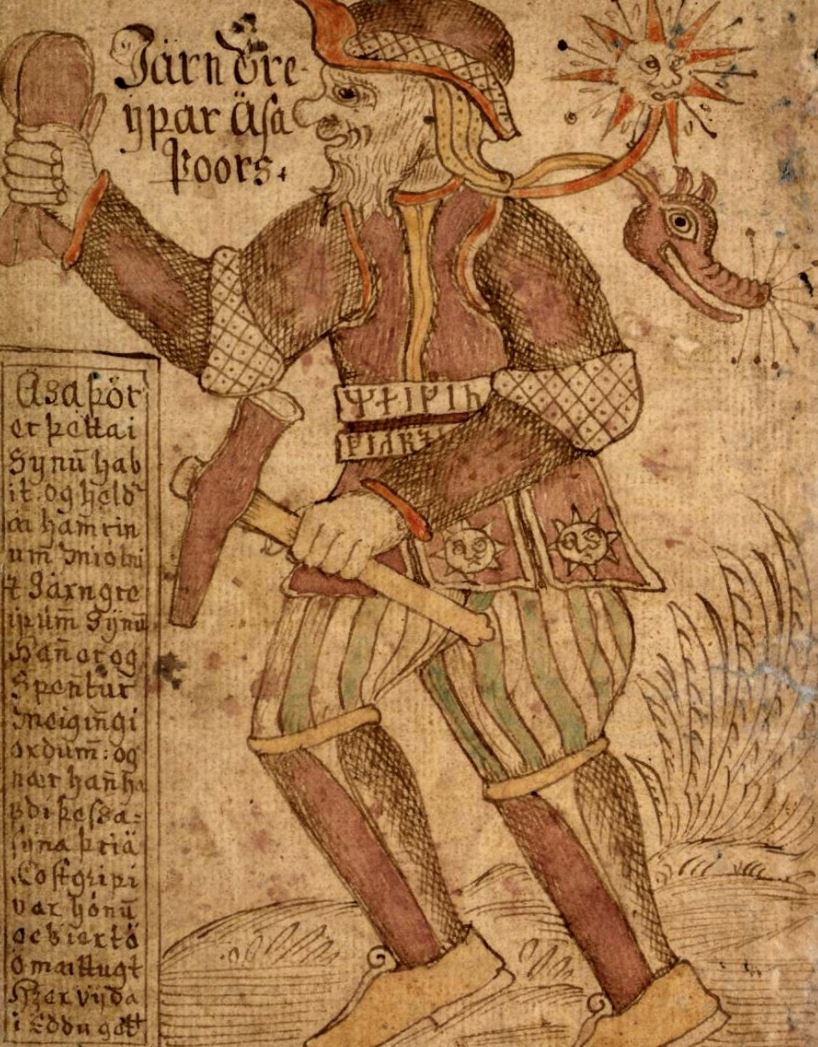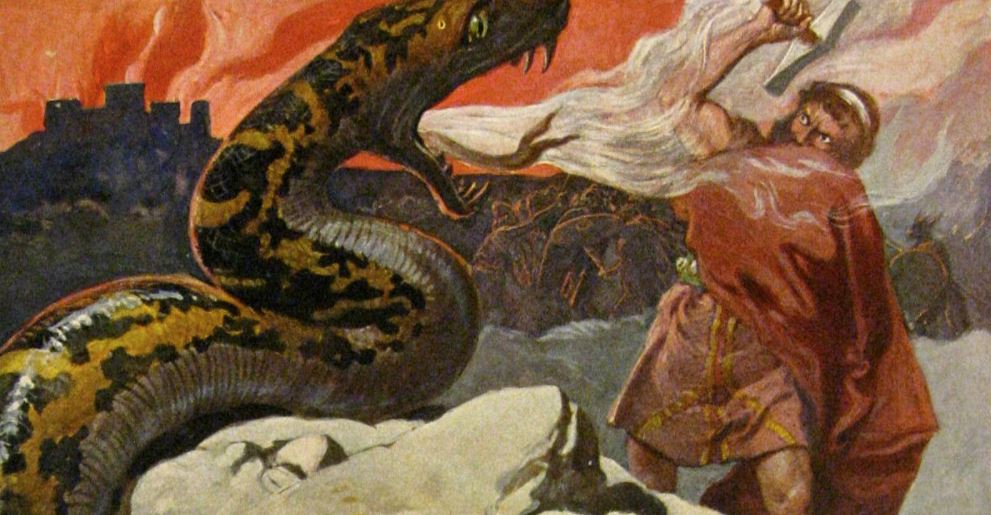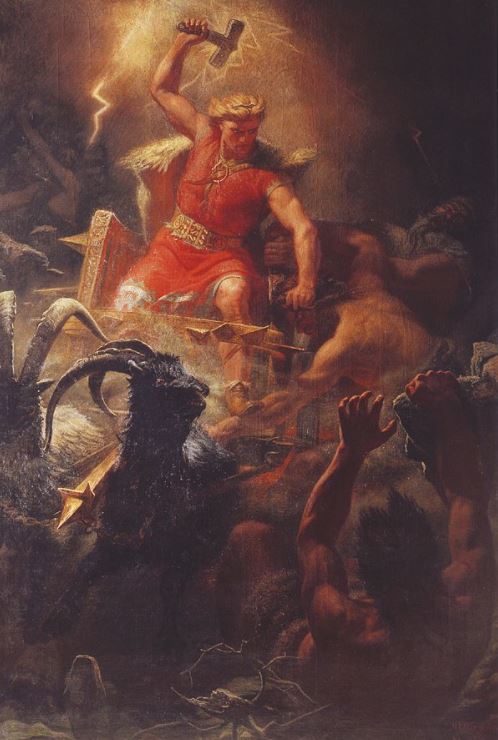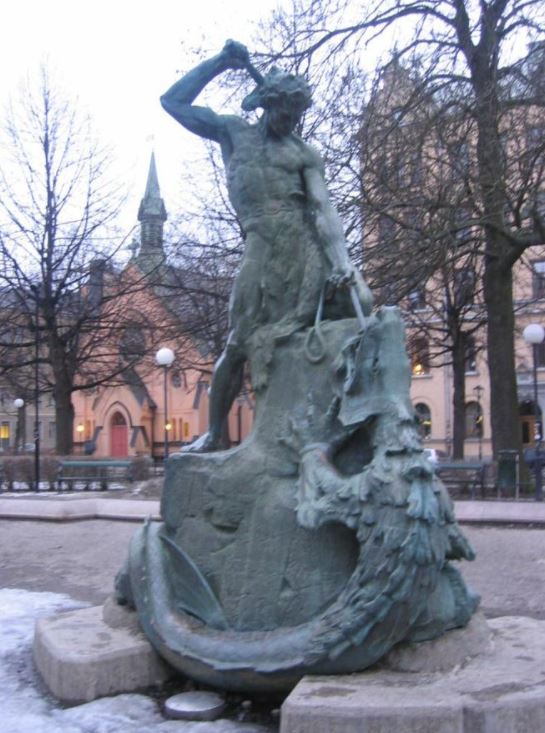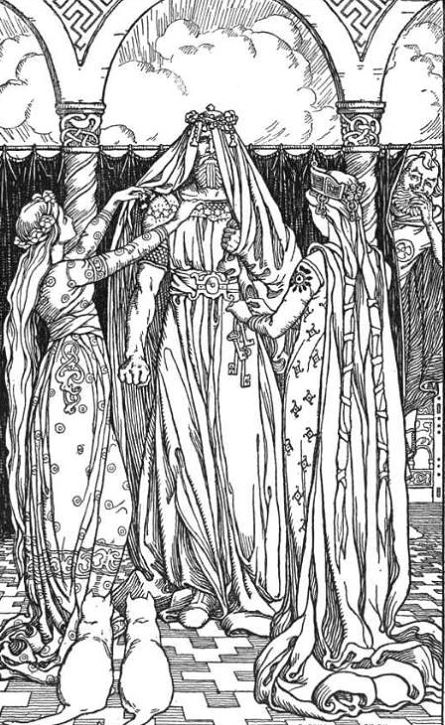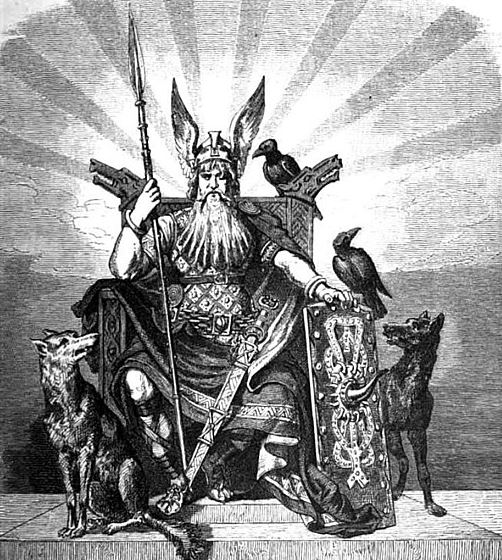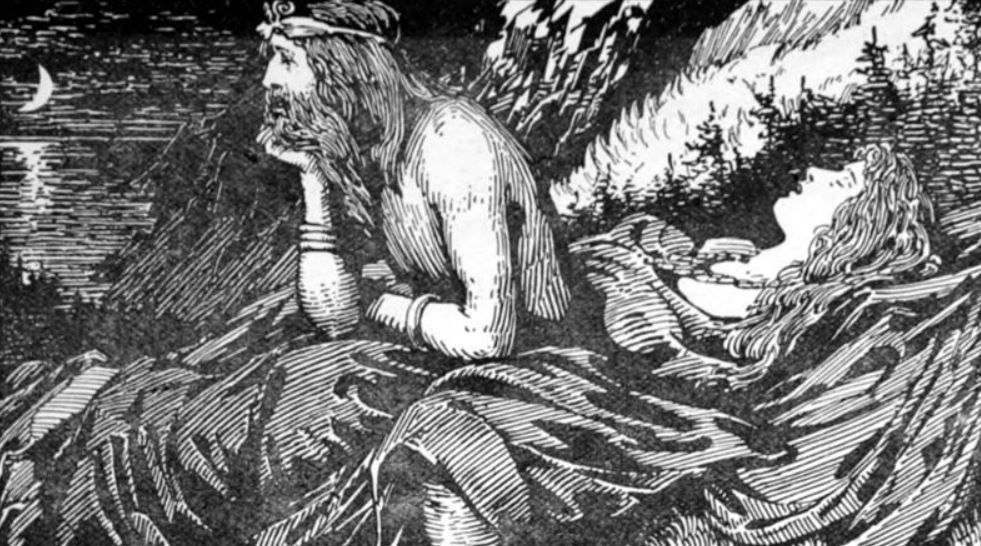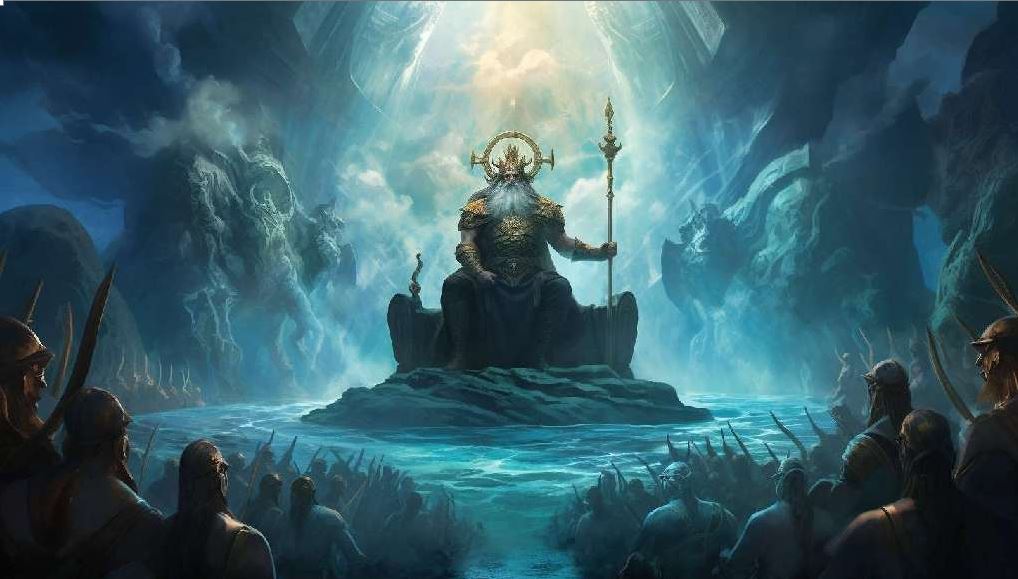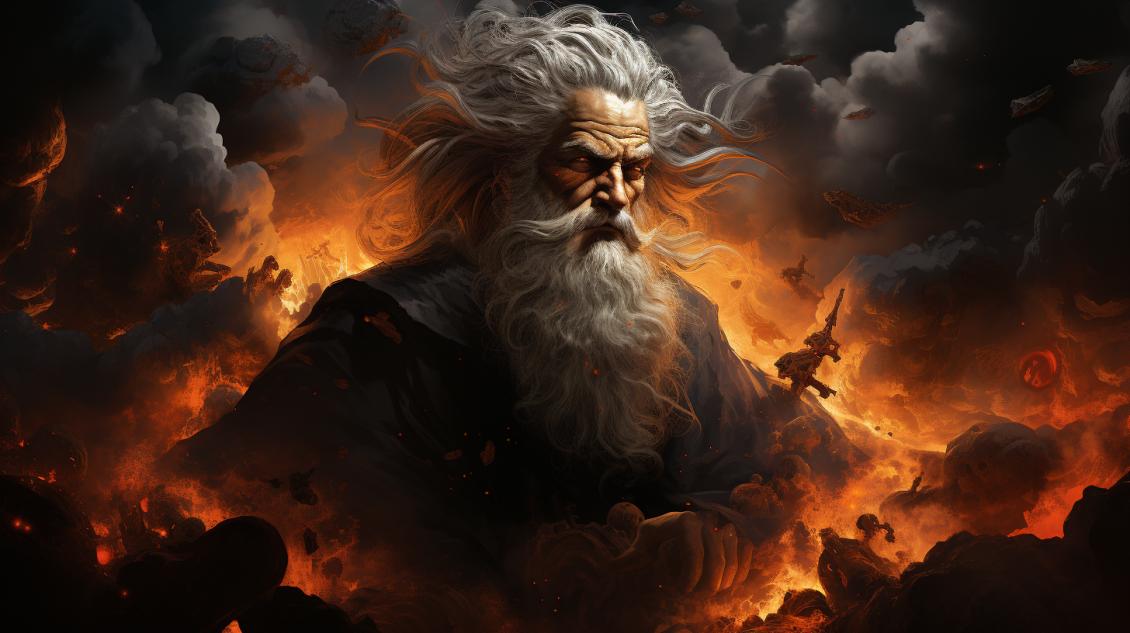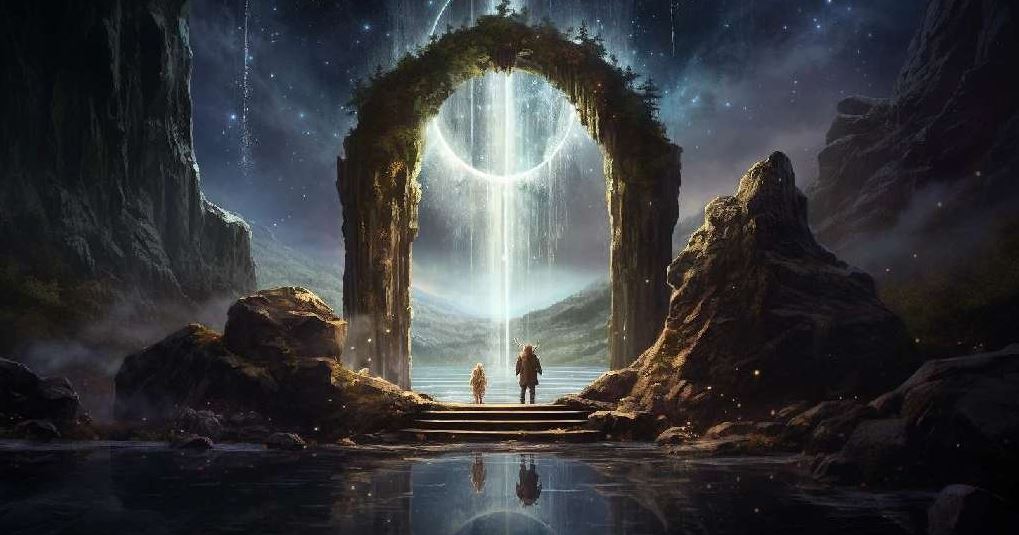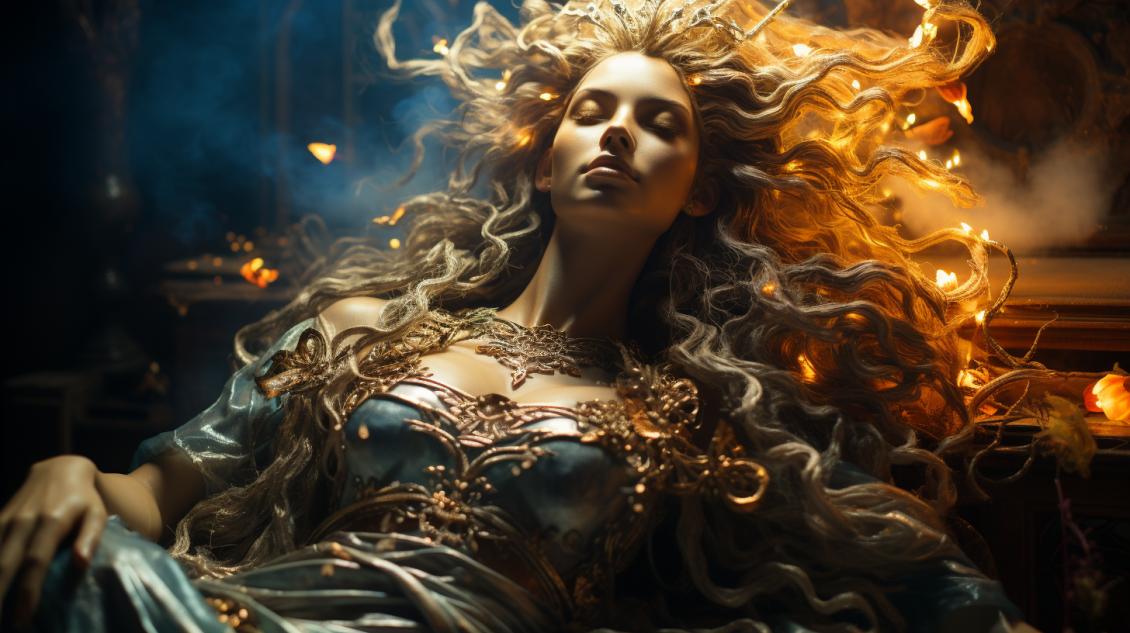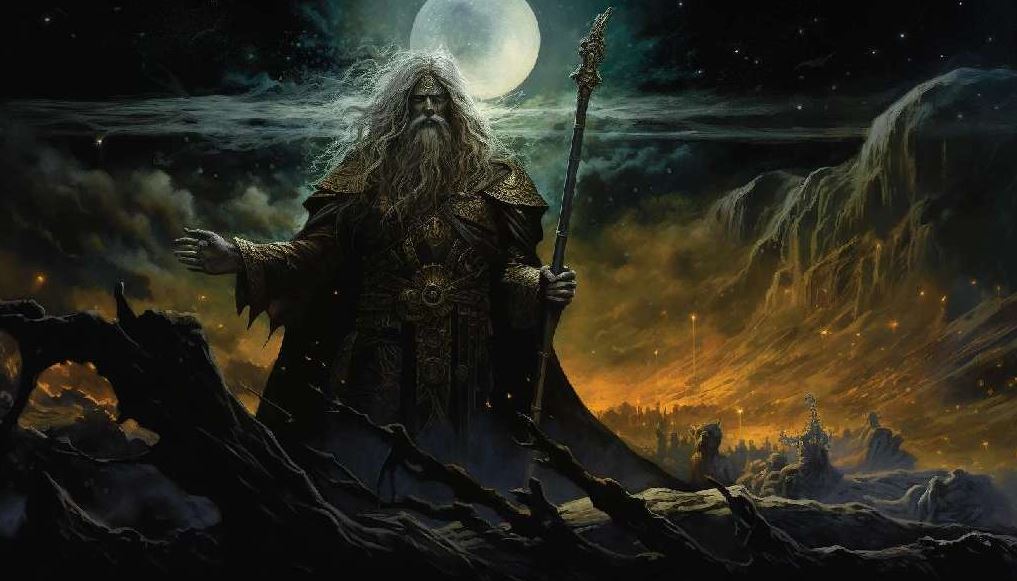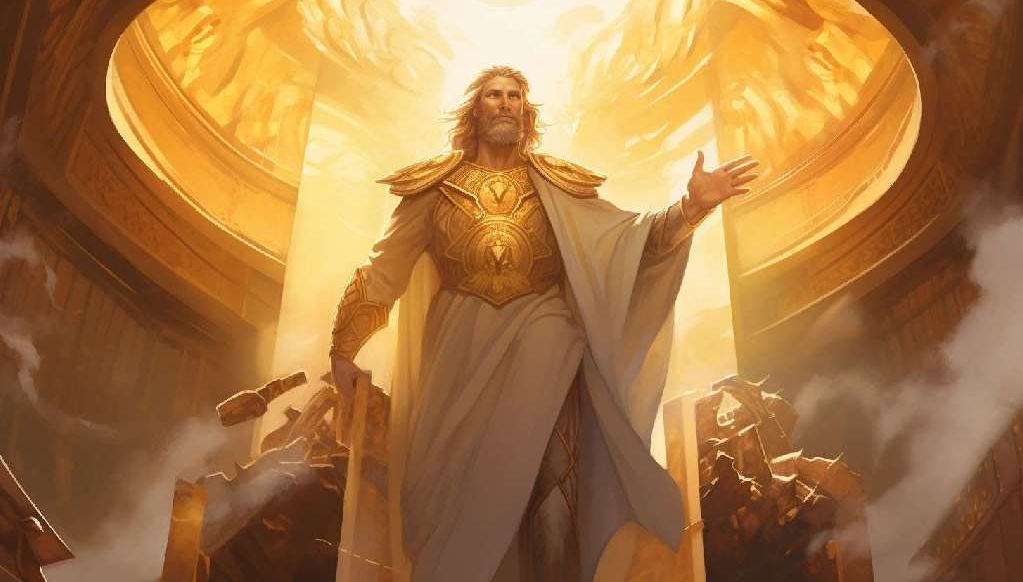Norse God Thor, God of Lightnings and Thunders
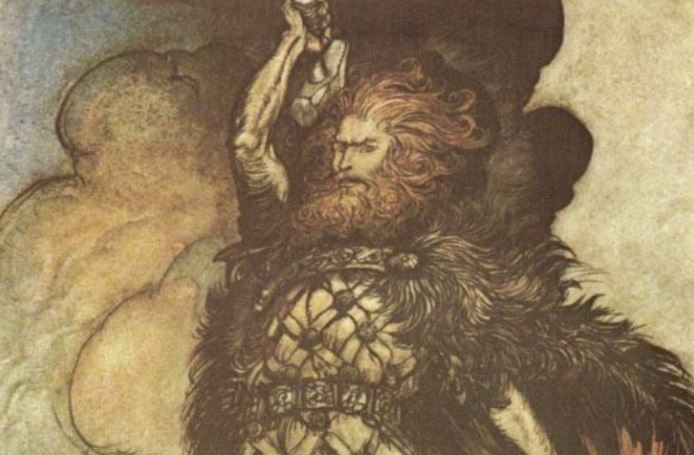
Few gods are as war-like and fierce as the hammer-wielding Norse god Thor.
His legends are numerous and tales of his exploits are found among much of Germanic, Icelandic, and Scandinavian tradition.
To this day, the Norse god Thor occupies a special place in modern culture where he is the subject of comic books, movies, and a host of works of art and literature.
What is Thor the god of?
Thor the Viking god is the god of thunder, lightning, sacred groves and trees, and the protection of mankind.
Norse god Thor represented with his hammer Mjolnir
Viking god Thor: Meaning of his Name
There have been many variations of his name throughout the cultures that worshiped him. It has also changed much over time.
Many would agree though that the god’s name likely derives from the Proto Indo-European word, unraz, meaning thunder.
This, in turn, makes it likely that he is a reinterpretation of the Celtic god, Taranis, who also governed many of the same things that the Norse god Thor does (thunder, lighting, and storms).
At any rate, he remained an integral part of the Scandinavian worship and even more so during the Viking Age when his cult spread across the North Atlantic.
The day, Thursday is named after Thor.
History of Thor the god of lightning and thunder
In terms of his mythical origin, the Viking god Thor is commonly attested as the son of the god of Wisdom Odin and a giantess.
His mother’s names differ from tradition to tradition — Jord, Hldyn, or Fjrgyn to name a few — but regardless, the fact she was a giant made the Norse god Thor half-jotunn.
His father, Odin, was the leader of the Aesir and highest among all the gods. He also bore numerous other sons which served as Thor’s half-brothers.
Thor the god of thunder is also married to the goddess Sif, a golden-haired goddess with a deep connection to the earth, fertility, and family.
Thor Norse Mythology: the acquisition of Mjolnir
Of the many myths that involved the Norse god Thor, none of them is as famous as the myth of how he acquired his signature hammer, Mjolnir.
The tale begins with Loki, god of mischief, up to his usual schemes. He cut all of Sif’s hair one day and this infuriated her husband the Norse god Thor.
Fearing the god’s wrath, Loki tries to make amends by promising that he would go to Svartalfheim and ask the dwarves who lived underground, and who were master builders, to make Sif a new head of hair.
The dwarves did just that and then along with the new head of hair for Sif, they also crafted the ship, Skidbladnir, and the spear Gungnir.
Before returning home though, Loki thought he could walk away with even more than intended. He would go to the dwarf brothers Brokkr and Sindri and taunted them with claims that they could not craft such great things as the other dwarves had for him.
Obviously insulted, the dwarves crafted three objects of their own: Gullinbursti, a golden-haired boar that is typically associated with Freyr, Draupnir, a golden ring that could replicate itself, and lastly, Mjolnir, the crusher.
Loki would return home and give Sif her hair, Thor the gift of Mjolnir, and divided the other gifts equally among Odin and Freya. It was said that Mjolnir was so heavy that no other gods but the Viking god Thor had the strength to carry and wield it. A testament to his strength. That is why, sometimes, he is known as Thor god of hammers.
There is also a foretelling of Thor’s coming battle with the great serpent, Jormungandr, one of the offspring of Loki and a giantess.
The two are fated to meet at an event called Ragnarok, a prophecy of the end of the world as we know it and the death of multiple gods. It is said the battle between Thor the god of lightning and thunder and Jormungrandr will result in their mutual demise.
Thor god of hammers in his fight against Jormungardr
Norse god Thor powers
The Viking god Thor is known for his bravery and love of getting into fights.
His fierceness made him a favorite among the roving and raving bands of Vikings. He wore a belt known as Megingjrd which had the power to double his strength.
Thor the god of thunder wields a war hammer knows as Mjolnir which is his most recognizable weapon. With the hammer, Thor god of hammers could send bolts of lightning towards his enemies and crush or grind any who had the folly to challenge him.
To better handle the hammer, the Norse god Thor was also known to wear metal gloves that were named Jrngreipr (iron grippers).
He drove a chariot pulled by two goats which he would regularly kill, eat, and resurrect with Mjolnir to continue pulling his chariot. He was also usually accompanied by his servants, the twins Thjlfi and Rskva.
Norse god Thor in one of his battle against giants
Thor Norse god symbols and their meaning
Thor god of thunder and lightning has taken on such an important role in the lives of the ancient Scandinavians and Vikings because he serves as a role model for what the ideal man was.
Thor Norse god symbol: the hammer
The main symbol of the god of thunder Thor is his hammer Mjolnir as it is part of his myth.
Representations of his hammer can be seen on shields, stone carvings, and other such items which were ever-present in the lives of the Nordic people.
The Norse god Thor actively defended his home and the other god’s from giants and monsters alike and never, ever backed down from a fight.
A statue of the Viking god Thor slaying the serpent
Thor Norse god symbol: the thunderbolt
As the god of thunder, Thor’s symbol is lightning. It was said that every time there was a storm, it was due to the Norse god Thor fighting with his hammer. The lightnings were the results of every hit with Mjolnir.
Additional facts about the Viking god Thor
Surprisingly, the Norse god Thor was also the god of farming and the cycles of agriculture. Due to his marriage to the goddess Sif, who was heavily associated with wheat and fertility,
Thor’s role as the bringer of rain makes both of them important parts of the cycles of farming. They represent both the soil and the nourishing rain that go into growing crops.
it is said that Thor built himself a home that is the largest of any of the gods. It possesses over 500 rooms.
In one myth of his myths, the manly Norse god Thor dresses as a woman to infiltrate a party to recuperate Mjolnir. This is better explained in the myths of Freya, here.
The Norse god Thor dressed as a woman
The Romans saw parallels of the Norse god Thor to their own thunder-hurling the god Jupiter and would refer to him by that name. In fact, Jupiter, Zeus, and Thor are likely all descendants of an original thunder and lightning bolt throwing Proto Indo-European god that’s much, much older.

